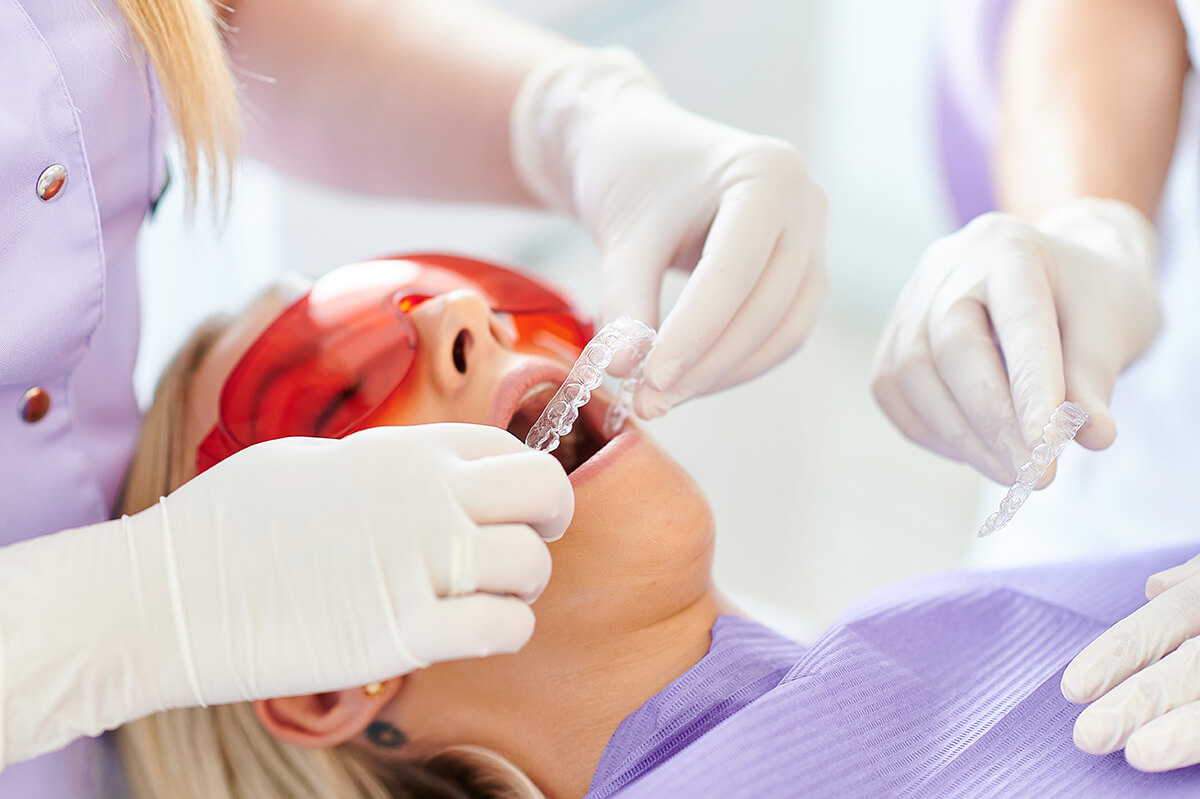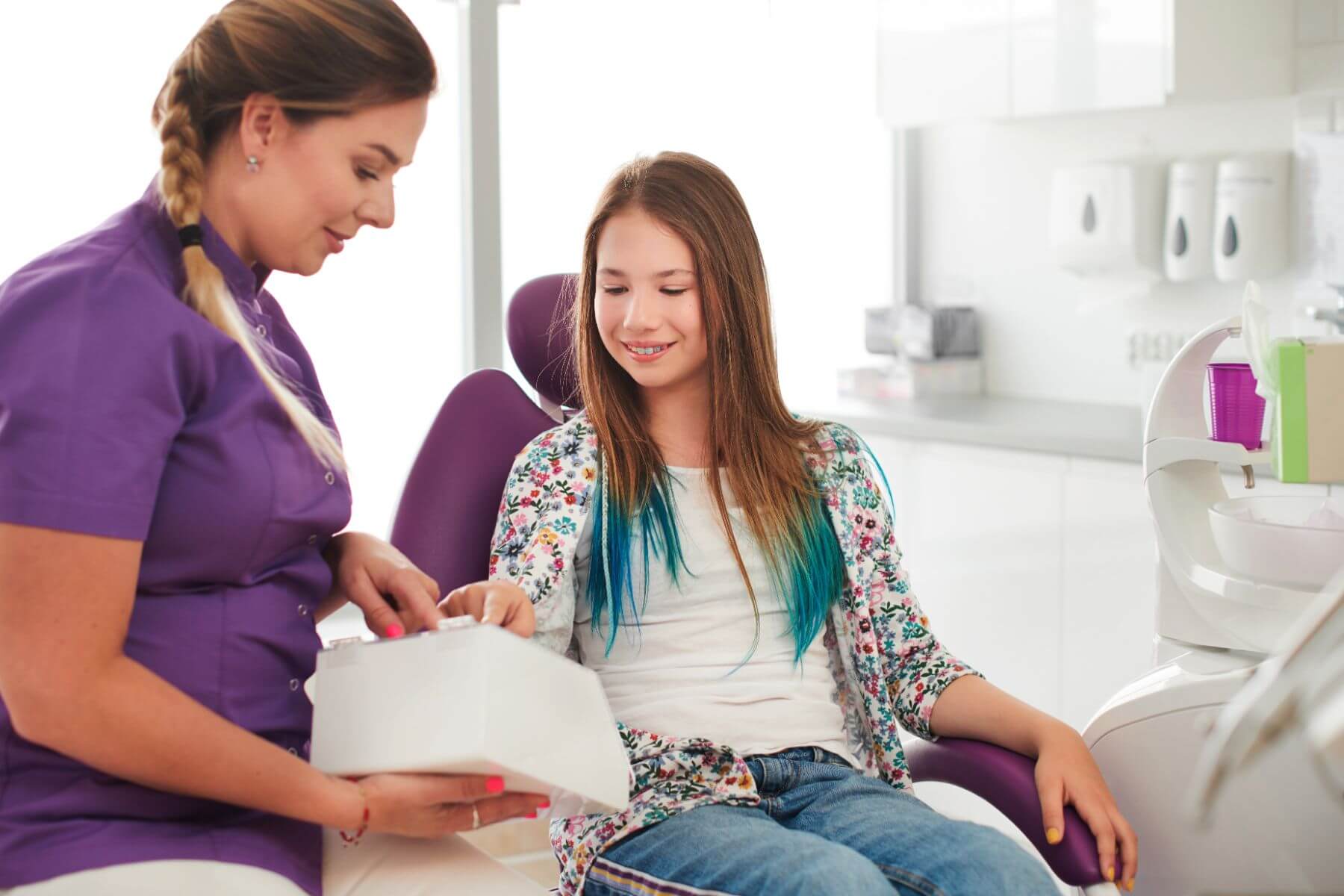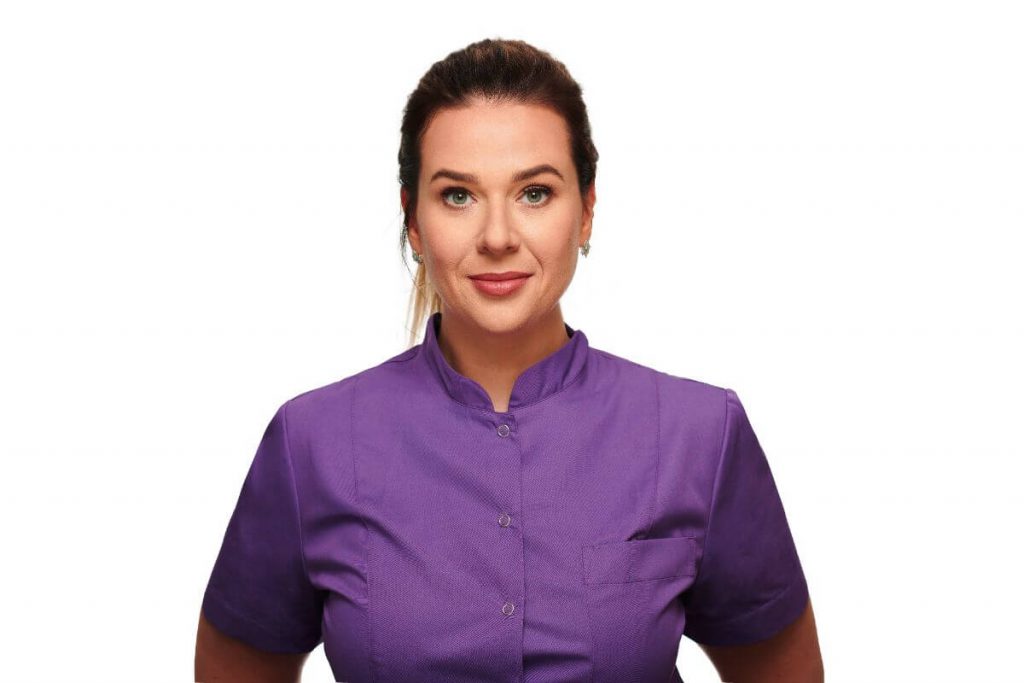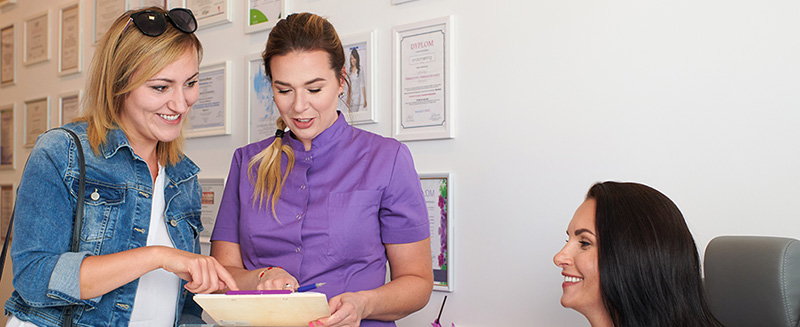
Orthodontics
Orthodontics is an area of dentistry concerned with malocclusion. Wrongly positioned teeth are certainly an issue of aesthetic nature, and they may have a negative impact on our self-confidence and well-being.Also, it is important to remember that their faulty positioning bears a negative impact on the health of the teeth themselves; it may lead to uneven wear and tear of the teeth, andit is more difficult to treat them as access to areas requiring attention is obstructed.Furthermore, the teeth which overlap cause uneven distribution of forces, which emerge during speech and chewing, which may lead to their weakening and loosening.
Orthodontics is a treatment whose purpose is the restoration of alignment to the teeth of the patient. Above all, in this area of dentistry removable and fixed appliances, which exert pressure on the teeth and move them into correct positions,are used. Orthodontics is available to all age groups, however, it is worth remembering that the sooner the treatment is commenced, the easier and quicker its course will be.
How does the dental appliance look like?
The removable appliance has a simple polymer structure, which aligns comfortably with the palate, and metal elementsthat apply the required amount of pressure to the teeth. How does the permanent brace look like? The appearance differs based on the model, but what all of them share in common is that they are always fixed permanently to the patient’s teeth.
Classic braces have a simple and typical appearance; a metal bracket rests on each and every tooth and a special wire, also known as an arch, links them together. The arch is connected to thebrackets with the help of special catches orrubber elements.The lingual brace’s structure is similar to the structure of the classic appliances, but the device is secured to the back teeth, near the tongue. This way of positioning makes the device virtually undetectable. The aesthetic appliance can be more or less visible than the classic brace; its colour may resemble the colour of the teeth orquite the opposite- the brackets can be fancy and colourful.
Permanent braces can be divided into 4 categories: traditional metal appliances, aesthetic braces (sapphire or porcelain), self-ligating devices, or orthodontic plates. In the case of traditional metal or aesthetic appliances, orthodontic metal brackets are fixed with glue to the surface of the teeth; they resemble small metal squares and in aesthetic braces, they have the colour of the teeth. Next, a wire is placed in the brackets and it is secured there with ligatures of the same colour as the device- transparent or colourful based on the patient’s preferences. A characteristic feature of the self-ligating devices is the lack of the ligatures which secure the wire- their role is performed by special catches which are secured permanently to the brackets.
Onlay orthodontic aligners areundetectable onlays, worn on the teeth for a specific period of time. At our surgery, we use excellent Invisalign appliances, which are transparent plates that perfectly match patient’s dentition and apply a controlled level of pressure to the teeth positioning them in the correct spots. The Invisalign aligner set is taken home by the patient, and it has to be replaced approximately every two weeks. High aesthetic value is undoubtedly its distinguishing feature; the aligners are virtually invisible to the external environment.

How is the device secured on the teeth?
The orthodontic therapy at our surgery is proceededby the consultation with the dentist; during the interview, the specialist learns about the patient’s problems and expectations.The therapy begins with teeth treating and cleaning. Also, diagnostic testssuch as panoramic x-ray, cephalometric radiography, and computed tomography are its inseparable elements. Next, the teeth impression is taken and used to build orthodontic models. All these procedures allow the orthodontist to learn the alignment of the patient’s teeth. Apart from this, we also take the picture of the patient’s face, profile, and teeth, and we examine the condition of their temporo-mandibular joint. The next step is the smile analysis and designing. All these steps combined allow us to employ the correct method of orthodontic treatment.
In the case of the removable appliances, thesedevicesare prepared by the specialist and handed to the patient. The device is worn at home and the only thing to remember about are the check-up appointments, which ensure the correct functioning of the appliance. How is it secured onto the teeth? Metal brackets are fixed to the teeth with glue and linked together with an arch.








 Removable appliance
Removable appliance 


